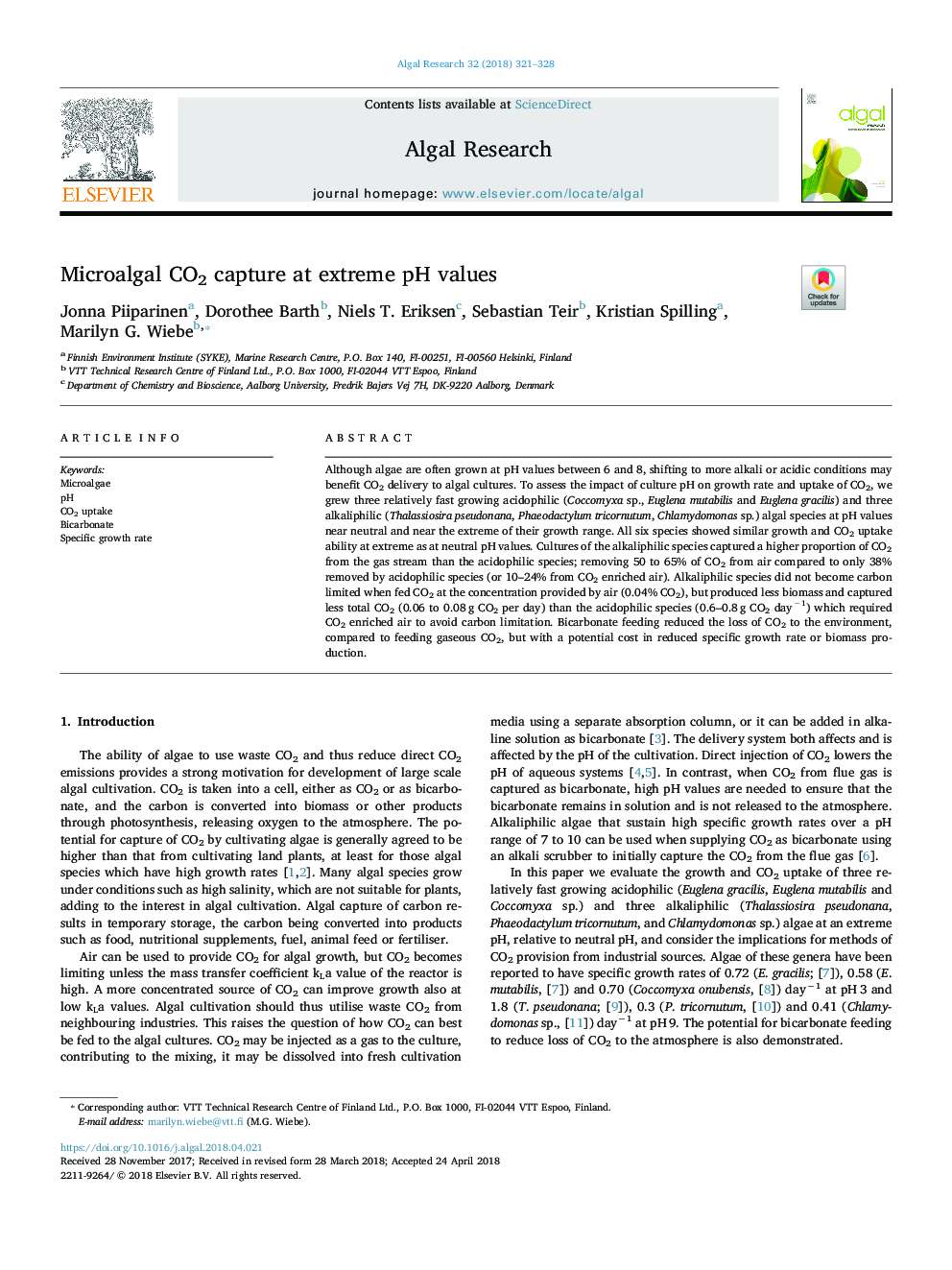| Article ID | Journal | Published Year | Pages | File Type |
|---|---|---|---|---|
| 8085825 | Algal Research | 2018 | 8 Pages |
Abstract
Although algae are often grown at pH values between 6 and 8, shifting to more alkali or acidic conditions may benefit CO2 delivery to algal cultures. To assess the impact of culture pH on growth rate and uptake of CO2, we grew three relatively fast growing acidophilic (Coccomyxa sp., Euglena mutabilis and Euglena gracilis) and three alkaliphilic (Thalassiosira pseudonana, Phaeodactylum tricornutum, Chlamydomonas sp.) algal species at pH values near neutral and near the extreme of their growth range. All six species showed similar growth and CO2 uptake ability at extreme as at neutral pH values. Cultures of the alkaliphilic species captured a higher proportion of CO2 from the gas stream than the acidophilic species; removing 50 to 65% of CO2 from air compared to only 38% removed by acidophilic species (or 10-24% from CO2 enriched air). Alkaliphilic species did not become carbon limited when fed CO2 at the concentration provided by air (0.04% CO2), but produced less biomass and captured less total CO2 (0.06 to 0.08â¯g CO2 per day) than the acidophilic species (0.6-0.8â¯g CO2 dayâ1) which required CO2 enriched air to avoid carbon limitation. Bicarbonate feeding reduced the loss of CO2 to the environment, compared to feeding gaseous CO2, but with a potential cost in reduced specific growth rate or biomass production.
Related Topics
Physical Sciences and Engineering
Energy
Renewable Energy, Sustainability and the Environment
Authors
Jonna Piiparinen, Dorothee Barth, Niels T. Eriksen, Sebastian Teir, Kristian Spilling, Marilyn G. Wiebe,
